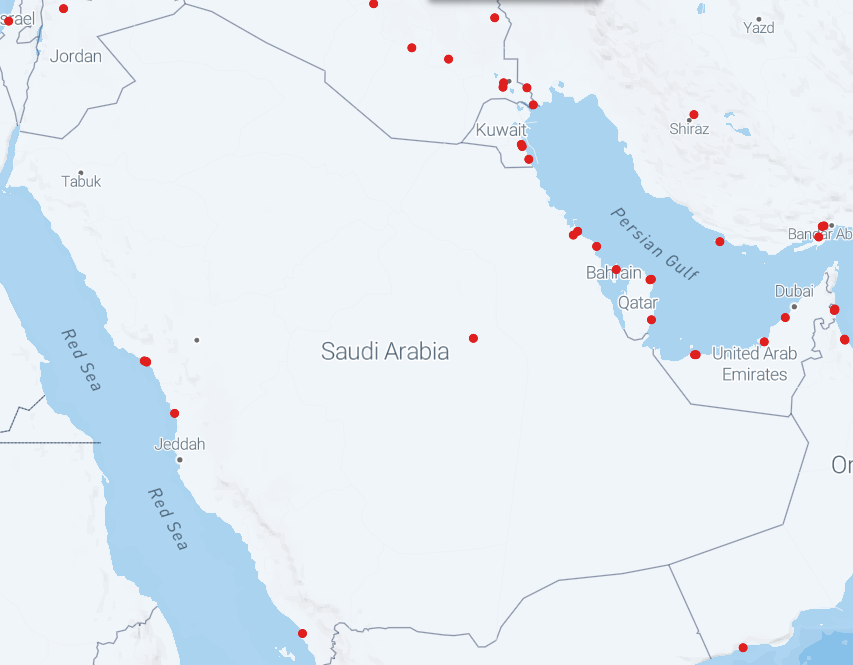
Saudi Refining Capacity Rises 14% in 2021
Saudi Arabia’s refining capacity rose 13.7% in 2021, one of the biggest increases among its peers, as the world’s largest exporter for crude continues to expand its downstream capabilities, according to the latest OPEC Annual Statistical Bulletin.
The OPEC+ kingpin added 400,000 b/d of refining capacity in 2021, raising its overall capacity to refine crude to 3.327 million b/d. The increase was largely due to the addition of the 400,000 b/d Jizan refinery in the country’s Red Sea-facing western coast.
Jizan is currently operating at a “little over 200,000 b/d”, Saudi Aramco CEO Amin Nasser said earlier this year.
The company plans to incrementally raise operating capacity by adding gasifiers to the facility this year.
Saudi Aramco is developing the facility to be a major exporter of power by 2023.
Saudi Arabia’s refining capacity is likely to rise over the coming decade in one of the rare additions globally as its main oil exporting company Saudi Aramco looks for downstream joint ventures in China and India – the major centers for growth.
Aramco has an interest in China’s downstream sector as it looks to lock in demand for its crude in Asia’s largest economy.
Saudi Aramco decided to move forward with a 300,000 b/d oil refinery and petrochemical project in northeast China on March 10.
Aramco said it had taken the final investment decision to develop a liquids-to-chemicals complex under a joint venture with North Huajin Chemical Industries Group Corp. and Panjin Xincheng Industrial Group.
The company also plans to develop a $44 billion integrated refining complex at Ratnagiri on India’s western coast with Abu Dhabi National Oil Company. The project has faced delays due to the complexity of land acquisition in India and the opposition from local villagers. OPEC’s second-largest producer Iraq also saw a marked jump in refinery capacity additions. Refining capacity rose 34.7% to 1.116 million b/d in 2021 from 828,000 b/d in 2020.
The increase was largely due to the upgrades in Baiji and Basrah refineries. The Baiji refinery, which suffered damages during its takeover by the Islamic State added 87,000 b/d, raising its capacity to 140,000 b/d. The Basrah refinery added 70,000 b/d, raising its capacity to 350,000 b/d.
Product growth
Saudi Arabia also marked the highest growth in production of petroleum products, which rose 17% to 2.548 million b/d in 2021 from 2.177 million b/d in 2020, according to OPEC Statistical Bulletin. The growth in product comes amid accelerating efforts to capture the growing market for product and feedstock in Asia.
Saudi Aramco has plans to convert up to 4 million b/d of crude into chemical products by 2030, from 1 million b/d presently.
Upstream data
Saudi Arabia’s proven crude reserves remained largely flat at 267.192 million barrels in 2021. The country added six additional rigs, taking the overall count of active rigs in 2021 to 65. Saudi Arabia’s cumulative production rose 11.7% in 2021 to 9.125 million b/d from 8.166 million in 2010.
The kingdom is producing significantly higher with output in April averaging 10.45 million b/d, according to Platts’ survey of OPEC+ producers in June. The country has increased output in line with OPEC+ directives to expand supply. However, the expanded volume is still below its quota of 10.549 million b/d.
OPEC+ ministers are set to meet on June 30 ahead of a trip by US President Biden to pressure Saudi Arabia and its allies to bring more supply to the market.
S&P Global by Jennifer Gnana, July 5, 2022
